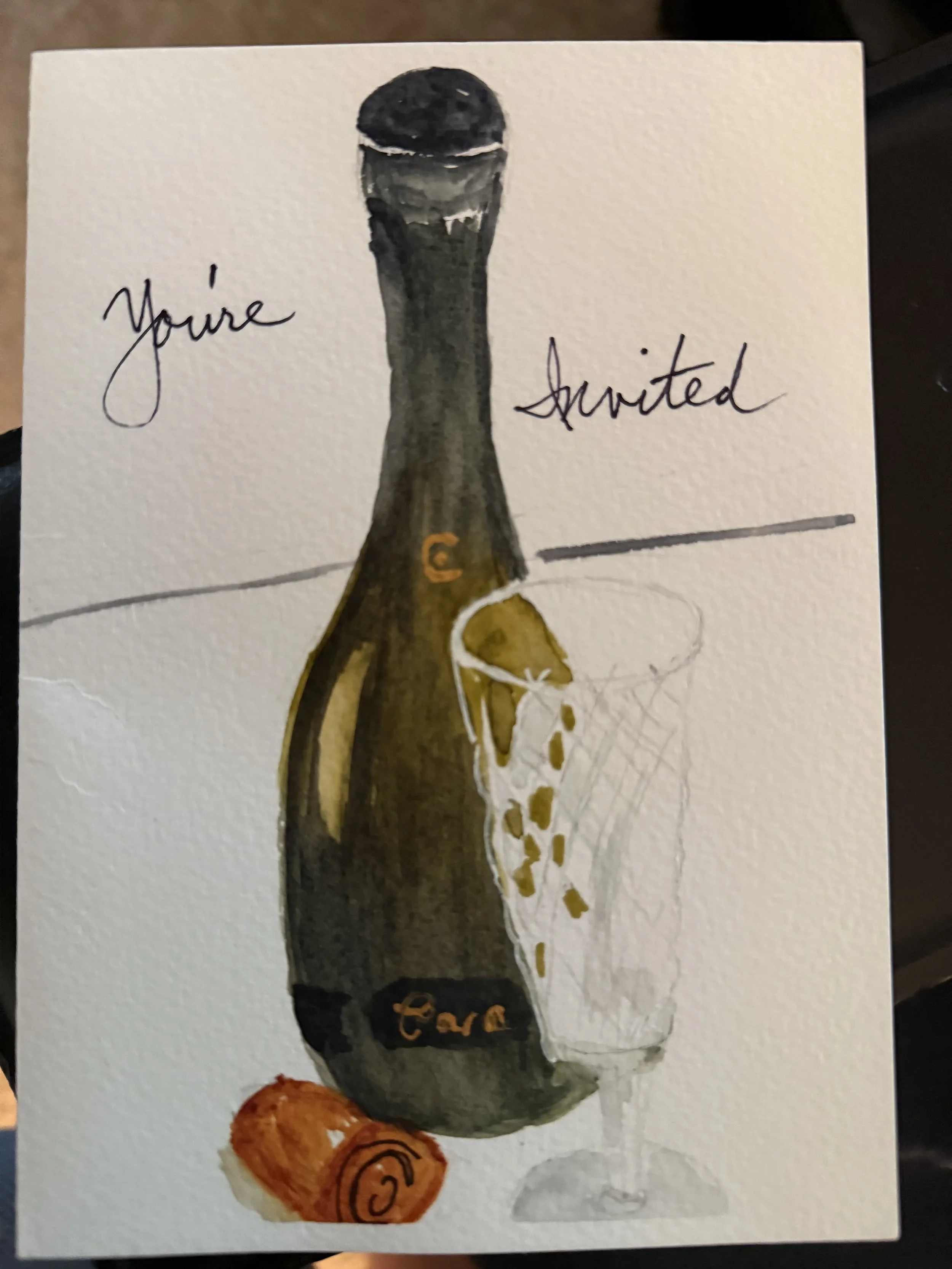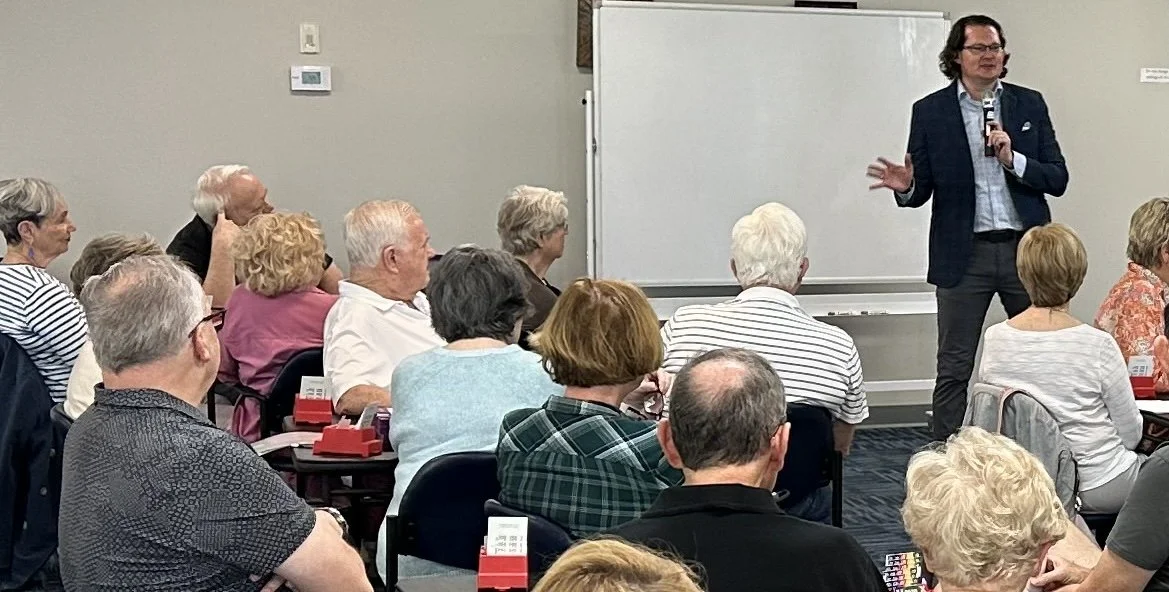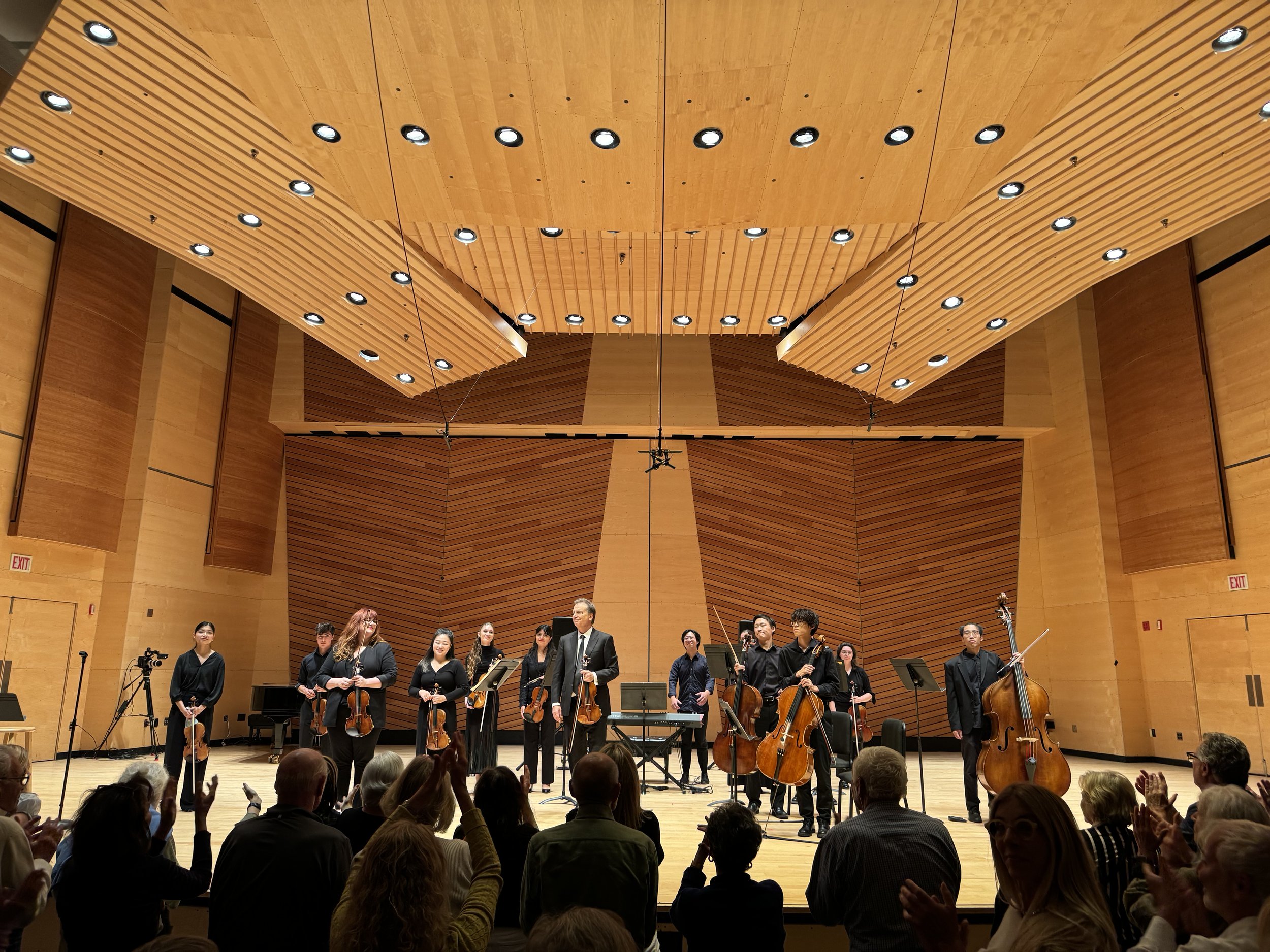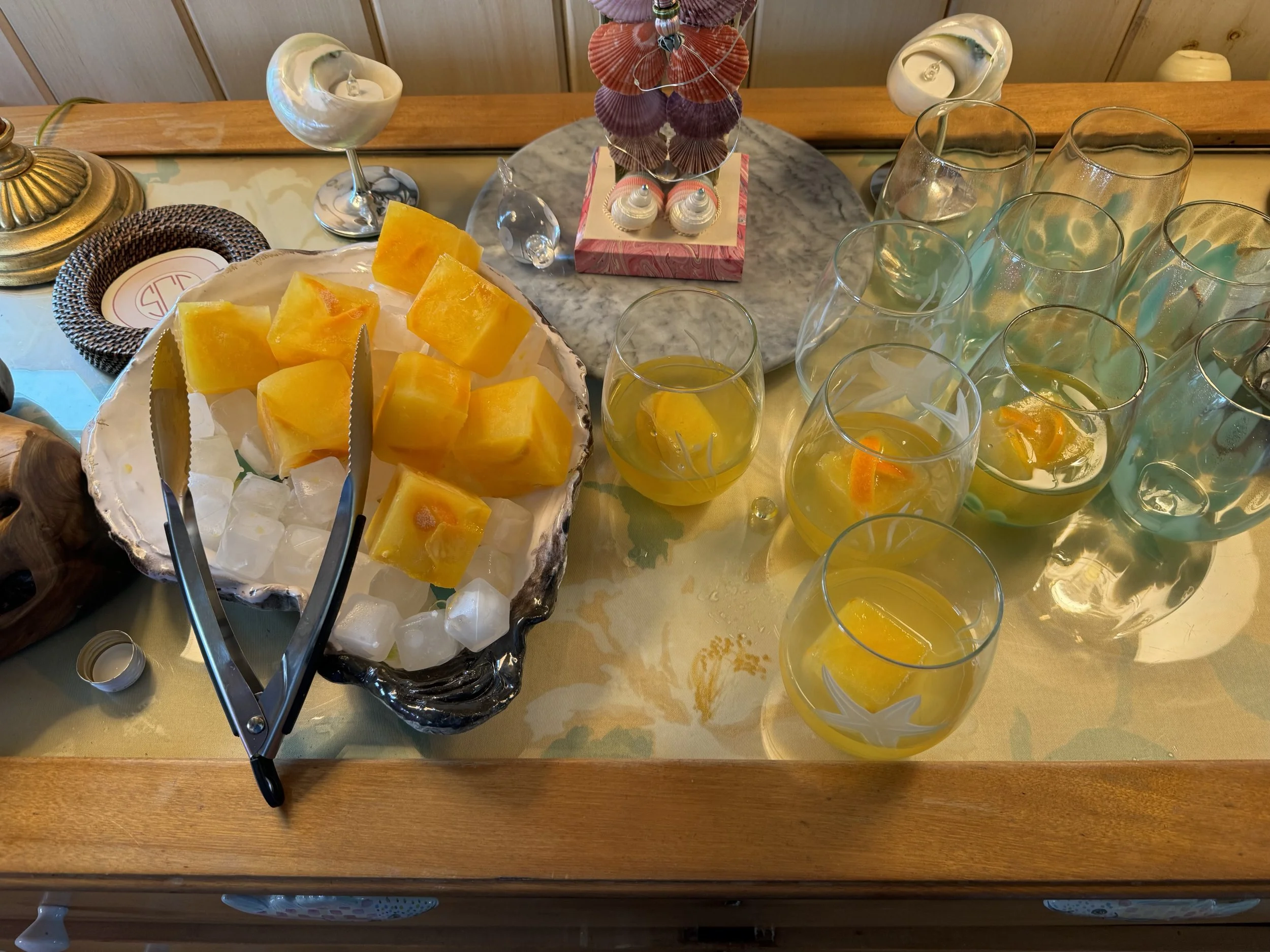When our left-hand opponent opens the bidding and the auction passes around to us, we have a big decision to make – should we get into this auction, or should we leave the opponents to play at the 1-level? We have a variety of bidding tools to help us compete in the bidding, but we need to use our judgment about when to compete in the bidding and when to keep quiet. Here we look at some of the classic bidding situations where we have a difficult decision and then overview some of our bidding tools in these auctions.
(561) NT and Balancing Auctions: Jump Overcalls in the Passout Seat
One place that we do not need a jump bid to show a weak hand is in the passout (PO) seat, also known as the balancing seat. In this seat with a weak hand, say 5-8 HCP, and a long suit, we would not bid; we would simply pass the hand out. Bidding here with so few HCP may give the opponents a chance to reach a better partscore or game that they may not otherwise reach. Since we will not bid in the PO seat with a weak hand and we could make a simple overcall with 9-10 HCP and a long suit, then a Jump Overcall in the PO seat is free to be used to describe a different type of hand that can otherwise be difficult to show.
(560) NT and Balancing Auctions: Range Stayman
A balancing 1NT bid can be a wide-ranging action, about 11-15/16 points. This 5-point range is much larger than most notrump bids and leaves partner with a more difficult bidding situation. Range Stayman is a tool that can help Advancer better determine the values of our hand and if game is a possibility.
(559) NT and Balancing Auctions: Balancing Notrump Bids
(558) NT and Balancing Auctions: 14-16 1NT Opening
(557) Competitive Auctions: I Want to Bid Doubles
There are certain auctions where we have made a bid that has “fully described our hand” and we leave the bidding up to partner. In auctions like these we usually are not very sure of what partner has for their bid and we want to leave any further decisions up to them. But sometimes we have more shape than partner expects or our instincts tell us that it is right to bid on. When that is the case we do NOT want to just take over and bid again – we told partner we would not bid any more after our first bid. In an auction like this we can use a double as a conventional bid saying “I want to bid more”. This is called an I Want to bid Double and it applies in very specific situations.
(556) Competitive Auctions: Anti-Lead Directing Doubles
Lead-directing doubles can be helpful in getting partner off to a good opening lead. These lead-directing doubles are common when the opponents make an artificial bid. When the opponents make a cuebid of our suit, a lead-directing double is also very common. Here we focus on this situation in detail to structure our agreements to allow us to communicate in the most effective way we can.
(555) Competitive Auctions: Scrambling 2NT
In competitive auctions where the opponents have found a fit, we compete aggressively – especially at matchpoints. We frequently use double (for takeout) with three-suited hands and sometimes with two-suited hands. To handle these situations, we want partner (Advancer) to have a tool to help us find our best fit. As usual, in competitive auctions our choice of convention will be 2NT. This gadget is called Scrambling 2NT.
(554) Competitive Auctions: Good/Bad 2NT in Competition
(553) Competitive Auctions: 4NT in Competition
When the opponents stay out of our auctions, we tend to have clear agreements about the meaning of a 4NT bid – usually Quantitative in a NT auction and Keycard in a suit auction. But in a competitive auction we are more likely to use 4NT as a bid showing two places to play. Let’s look at some of these auctions so we know what partner is trying to do when they use 4NT in a competitive auction.
(552) Competitive Auctions: More Bidding over 3-Level Preempts
When the opponents open the bidding with a 3-level preempt then much of the tension in our decision-making process comes around “Should we bid beyond 3NT?” This is especially true when the opponents open the bidding with a 3-Major preempt, because when we have one long minor suit then we likely want to play in 3NT or 5-minor. This allows us to use 4-minor in some interesting conventional ways, just as we do vs. a 2-level preempt.
(551) Competitive Auctions: Bidding over 3-Level and 4-Level Preempts
When the opponents open at the 3-level or 4-level they put a lot of pressure on us to make difficult decisions without much room to maneuver or describe our hand. This preempt will force us to either double or overcall at a very high level – we will not have many of the options that are available to us at lower levels. Let’s look at each of these options and see how we need to adjust our thinking and bidding because of the lack of space and options available to us.
(550) Competitive Auctions: Leaping Michaels
When RHO opens a 2-level preempt, they have started eating up our valuable bidding space, but this is just the start of their attack on us. LHO may join in the attack and raise the preempt, making our life even more difficult. When we are bidding over RHO’s 2-level preempt we should keep this in mind. We need lots of tools to deal with this situation. Let’s look at these options.
(549) NT Bidding: Slam Tries After Stayman
One of the most common gadgets that we use when partner opens 1NT is Stayman. We primarily use Stayman to search for a 4-4 Major suit fit. After Stayman, sometimes we want to have a way to raise partner’s suit where they cannot pass. We will want a “Forcing Raise” (similar to Jacoby 2NT or Inverted Minors) in order to find out more about Opener’s hand. This is missing from a standard bidding system. It is a valuable tool for making a slam try while keeping the auction from getting too high.
(548) NT Bidding: Modern, Transfer, and Modern Transfer Lebensohl
Lebensohl is an excellent system for dealing with interference over our 1NT opening bids, but it has some flaws. In Lebensohl auctions, we will sometimes play the hand from the “wrong” side (Responder’s side), and Responder often has three strengths (buckets) to describe. Let’s see how Transfer Lebensohl is an upgrade to help solve these problems.
(547) NT Bidding: Responding after a Penalty Double of a 1NT Opening
When we open the bidding with 1NT, showing 15-17 points, if an opponent makes a penalty double, we are less likely to be looking to invite or bid game. We are usually looking to escape from a 1NT contract and attempt to find some safer place to play. This safe place will hopefully be our largest fit or a long suit in the weak hand (in Responder’s hand). In order to find this place to play we need to look at how Responder’s bidding options change after a penalty double.
(546) NT Bidding: Responding to 1NT vs. 3-Level Interference
There are many systems the opponents play in order to interfere over our 1NT opening bid, but almost all of these systems use the 3-level (actually 2NT+) for the same meanings – 2NT as a weak bid showing both minors and 3-level bids as weak with a long suit, preemptive. It is important that we and partner are on the same page for how to deal with this higher-level interference.
(545) NT Bidding: Responding to 1NT in Competition - Lebensohl
(544) NT Bidding: Transfer Landy+ vs. Weak 1NT Openings
When the opponents open the bidding with a weak 1NT we need a good method for dealing with their unusual opening bid. The most common range for a weak NT is 12-14 points, but we define 1NT to be weak if the range does not contain 16 points. When constructing a system to allow us to bid over these weak 1NT openings we need to take a different approach than bidding over a strong 1NT opening. We frequently may have a powerful enough hand to be interested in exploring game when the opponents open a weak 1NT. Thus, we construct our bidding system to allow us to explore game and make constructive bids, not just be destructive.
(543) NT Bidding: Penalty Double Systems vs. NT Openings
When the opponents are playing a Weak 1NT opening bid (for example, 12-14 points), we need to bid only when we have a decently valued hand. We tend to bid with hands that would normally have overcalled at the 2-level, hands with about opening values. Here we are primarily bidding constructively because when the opponents open a Weak 1NT, our side may still have game. If we bid destructively (with only shape and without much strength) then if partner has values, they may push the auction too high. It is common to use a different bidding system against the opponents’ Weak 1NT opening bid than the one we use against a strong 1NT opening. These systems usually contain a penalty double that allows us to show a very good hand as well, and thus penalize the opponents when partner also has some values.
























